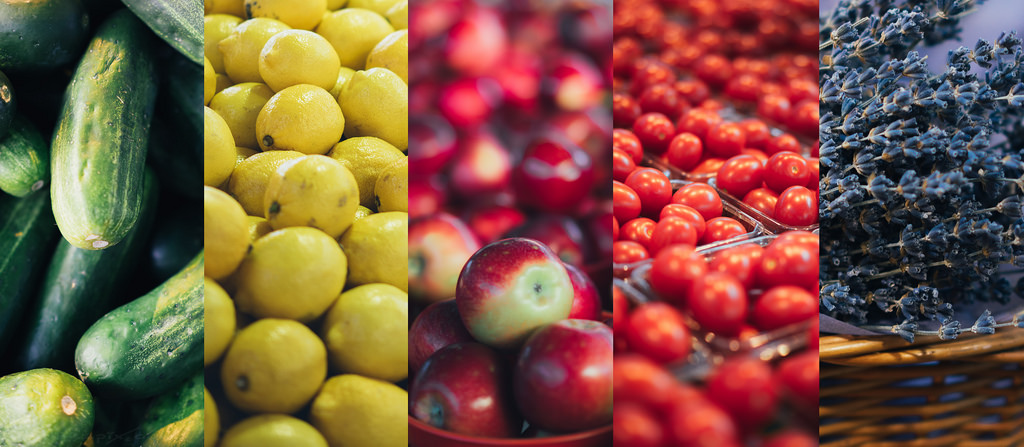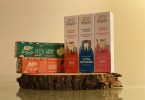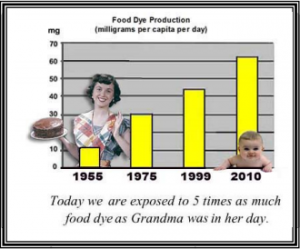
Photo from : http://www.feingold.org/
Foods we eat today are usually genetically modified and have less vitamins and nutrients than foods in our parents’ generation or today’s organic foods. Our present day foods are full of additives, sugar, artificial flavorings and dyes to make them look and taste better to consumers and have a longer shelf life.
What is wrong with foods that look pretty, even if they use a bit of coloring to get it pretty? Beside from the fact that ingesting chemicals has a negative side effect on health in general, one of the common trends across reports and studies regarding ADHD is that artificial coloring and preservatives affects ADHD behaviors.
The Feingold diet form the 70’s, called the ‘original’ ADHD diet treatment, focuses on eliminating artificial coloring and flavoring as well as certain preservatives in children with hyperactivity and learning disabilities. The elimination of these substances showed an improvement in behavior. We have to note that results are controversial as to the level of results… but no matter to what level, they DID SEE RESULTS in better behavior, learning and health.
Most of these synthetic additives (artificial coloring, flavoring and preservatives) are found in processed foods. Therefore one can easily understand that a reduction in these foods and making healthy choices can directly improve concentrative and increase productivity in everyone.
Once you jump into the world of healthy choices and clean eating you will be surprised at what you didn’t even know you were feeding your kids! As part of my education and trying to get a handle on everything I started to read all the ingredient labels on food… I had no idea what most were. So then I would look up each one and try to find out about it, but there are SO MANY (and so many of them were linked to behavior problems of ADHD, but many were direct causes of cancer too)!
It became clear. I do not have a degree in nutrition to 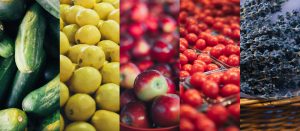 understand all this, and I am only trying to feed my kids things that will help them and not hurt them… there has to be an easier way. So we adopted the motto “If we can’t pronounce it, we won’t eat it”. That simple step made my life so much easier! We started replacing ADHD-linked foods (fast food, red meat, potato chips, high-fat dairy, high processed foods in general) with colorful vegetables, fruit, fish instead of meat and whole grains and we SAW THE DIFFERENCE! After only a week or so we could see a noticeable difference in our severe ADHD son!
understand all this, and I am only trying to feed my kids things that will help them and not hurt them… there has to be an easier way. So we adopted the motto “If we can’t pronounce it, we won’t eat it”. That simple step made my life so much easier! We started replacing ADHD-linked foods (fast food, red meat, potato chips, high-fat dairy, high processed foods in general) with colorful vegetables, fruit, fish instead of meat and whole grains and we SAW THE DIFFERENCE! After only a week or so we could see a noticeable difference in our severe ADHD son!
It starts in your grocery cart and you can do it too! Next time you are in the grocery store check the ingredient list for these items:
Artificial coloring:
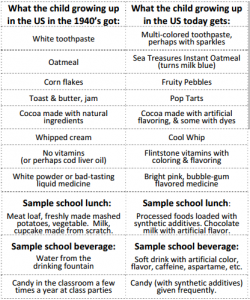
We are eating very differently from our grandparents! Photo from http://www.feingold.org/
- FD&C Blue No. 1 and No. 2
- FD&C Yellow No. 5 (tartrazine) and No. 6
- FD&C Green No. 3
- Orange B
- Citrus Red No. 2
- FD&C Red No. 3 and No. 40 (allura)
Other dyes may or may not be listed, but be cautious with anything colored that you put in your mouth (toothpaste, hard candy, barbecue sauce, cake mixes, fruit and sports drinks, etc.)
Chemical preservatives:
- sodium benzoate
- butylated hydroxyanisole (BHA)
- butylated hydroxytoluene (BHT)
- sodium nitrate
- tert-Butylhydroquinone (TBHQ)
The following are various names for SUGAR:
- corn sweetener
- corn syrup
- corn syrup solids
- dehydrated cane juice
- dextrin
- dextrose
- maltodextrin; malt syrup; maltose
- molasses
- rice syrup
- saccharose
- sorghum or sorghum syrup
- sucrose

